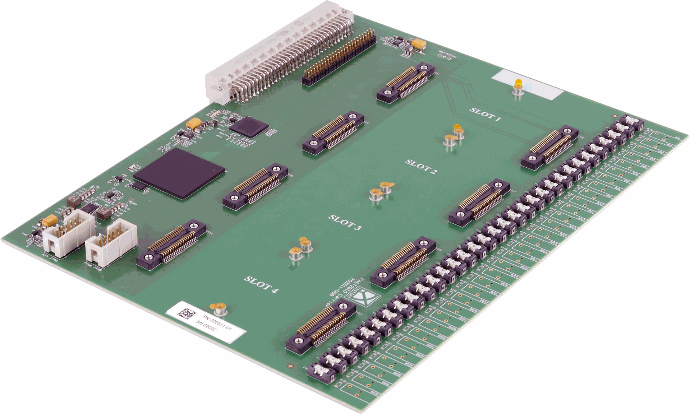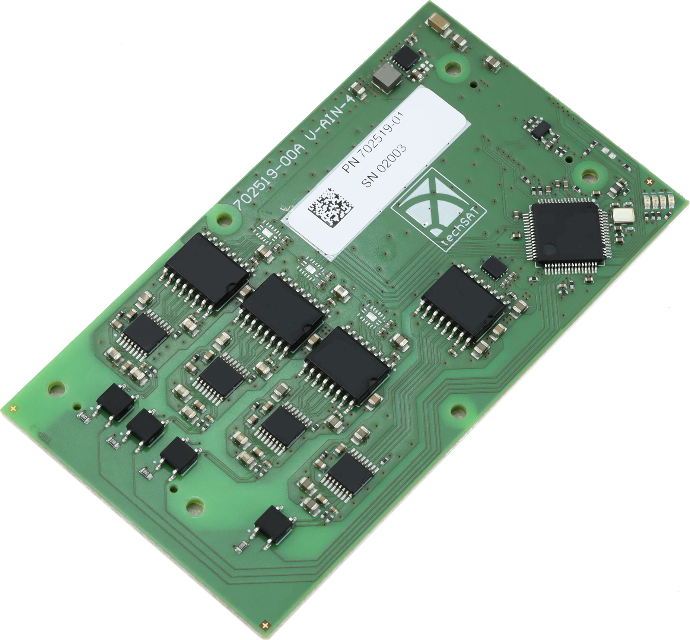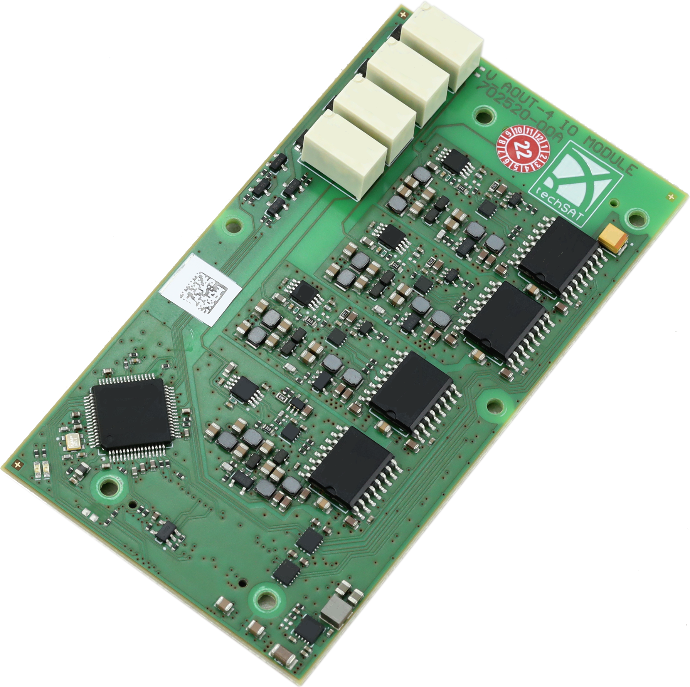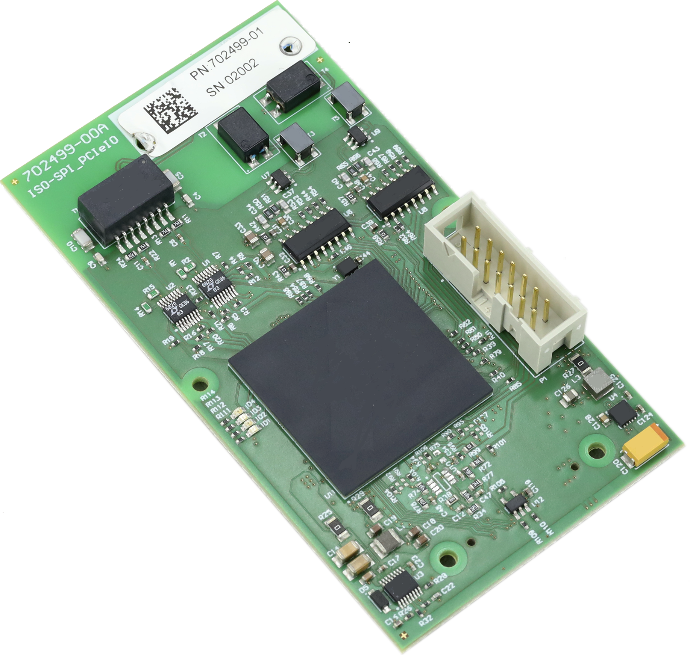TSMIO-2G Product Family
TechSAT's Modular IO Family - Second Generation
The TechSAT's modular IO product familiy, second generation, provides a set of intelligent I/O modules mountable either on a PCIe Carrier or on an Ethernet Carrier. All members of the TSMIO-2G family are fully integrated into the TechSAT ADS2 Simulation and Test Environment as well as provided as standalone products with a fully featured user API.
The current available IO modules include discrete I/O module, analog voltage input module, analog voltage output module, resistive sensor simulation module, isolated serial peripheral interface module.
Several new modules and carriers are on the road map for the coming months.
PCIe-2G Carrier
Overview
The PCIe-2G Carrier is an intelligent FPGA based PCIe carrier for any combination of up to four TSMIO-2G modules.
The carrier’s FPGA hosts the PCIe interface as well as 4 instances of the TSMIO interface.
The TSMIO interface IP support sampling mode as well as streaming mode. In sampling mode, the carrier transfers the latest value sampled by I/O modules to the host. In streaming mode, it transfers all data acquired since the previous frame.
Communication with the host uses DMA. One single DMA transfer is used to send output data to all modules of a carrier. One reply transfer returns the receive data from all modules.

FAST-2G Carrier
Overview
The FAST-2G Carrier is an intelligent FPGA based Ethernet carrier for any combination of up to four TSMIO-2G modules. The carrier’s FPGA hosts the Ethernet interface as well as 4 instances of the TSMIO interface.
The TSMIO interface IP support sampling mode as well as streaming mode. In sampling mode, the carrier transfers the latest value sampled by I/O modules to the host. In streaming mode, it transfers all data acquired since the previous frame.
A single Ethernet message is used to send output data to all modules of a carrier. One reply message returns the receive data from all modules.
SIM-OE Switching Extension
The purpose of the SIM-OE Extension is to switch the input of a UUT between a simulated signal and a real sensor.


Resistive Sensor Simulation Module - RSS3

Overview
The RSS3 module provides simulation of
resistive sensors, such as PT100, PT1000, NTC, or PTC as well as customer specific scales.
Each module contains three channels and up to four modules can be mounted on a
carrier (PCIe or Ethernet).
Each channel is implemented by a resistor network and a set of solid-state switches controlled by a microcontroller to provide the commanded resistor value.
The three sensor channels are galvanically isolated from each other and from the digital domain.
Discrete Signal I/O Module - DSIO8
Overview
The DSIO8 module is a discrete input/output board with up to 8 channels. Each channel can be programmed to behave as ABD100 GND/OPN, 28V/OPN, or GND/OPN input and output.
In addition, each channel is also configurable for High Side or Low Side operation with software configurable switching threshold. The user can select one pull resistor per channel (pull-down for HS operation, pull-up for LS operation).
One common reference voltage for outputs and pull resistors provides the high current paths. The output switches and pull resistors are connected to the reference voltage. Each output is rated for sinking/sourcing up to 500 mA continuously with a cumulative sink/source current of 2A per module.

Analog Voltage Input Module - V-AIN4

Overview
The V-AIN4 module provides four individually configurable and galvanically isolated 16-bit analog input channels. The channels are individually configurable for 9 different acquisition ranges (see Technical Data) through the API.
The modules are factory calibrated. Gain, offset and linearity correction parameters are stored on the module and applied during acquisition by the on-module software.
Analog Voltage Output Module - V-AOUT4
Overview
The V-AOUT4 module provides four
individually configurable and galvanically isolated 16-bit analog output
channels. The channels are individually configurable for 3 different ranges
(see Technical Data) through the API.
The modules are factory calibrated. Gain, offset and linearity correction parameters are stored on the module and applied during output generation by the on-module software.

Isolated Serial Peripheral Interface Module - IsoSPI

Overview
The IsoSPI module provides four ISO-SPI interfaces, used specifically for test and integration of battery management system components.
The module’s IsoSPI bus can be configured as master or slave. The modules are used to communicate with the LTC6820 and L9963 ICs. These ICs are general purpose SPI to isolated SPI transceivers to establish communication between devices that are not in the same voltage domains.